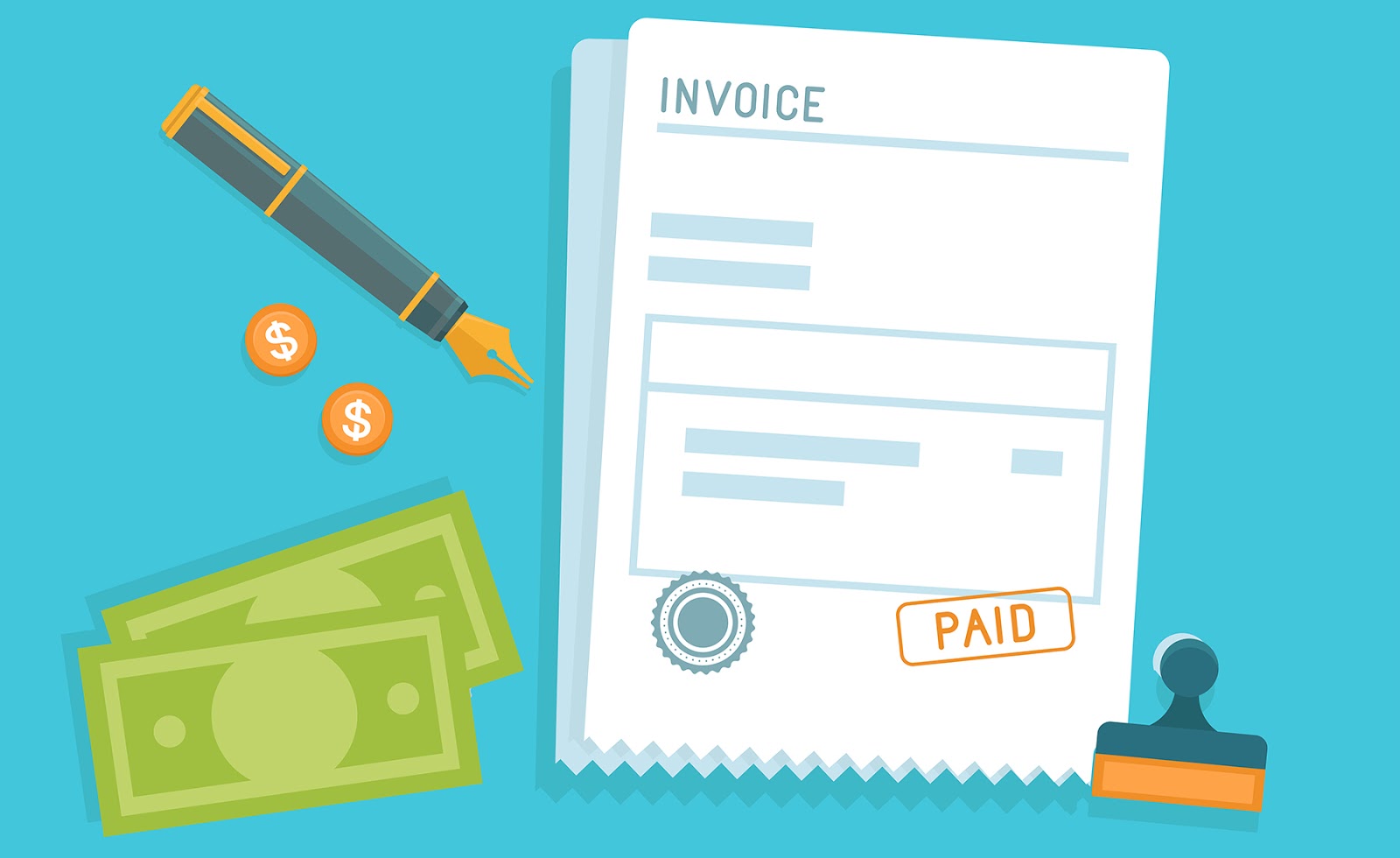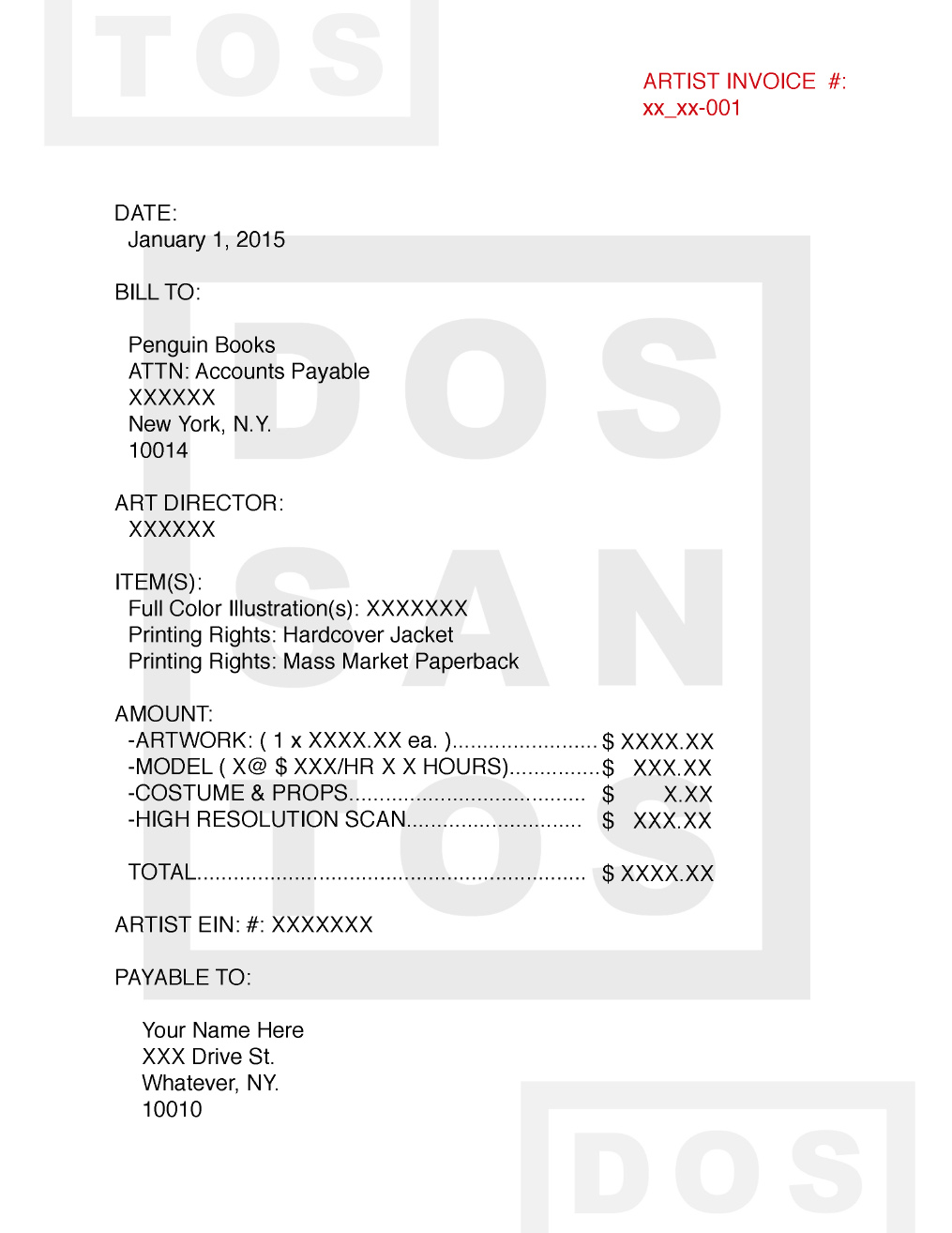Ok, everybody. I’ve been posting a lot of travel lately, and that’s great for inspiration, but it’s September and it’s Back To School time. More specifically, Back to Art Business School. I’m going to break down something that you’d think was pretty simple, but a lot of people get wrong, causing no end of frustration to artists, art directors, and accountants throughout the industry: Invoicing.
Ask any Art Director: getting artists to properly fill out paperwork is like herding cats. Many companies, who I’m extremely jealous of, have gamed this system as much as possible. Some companies generate their own invoices for artists, some just computerize the entire system, and some use digital paperwork services like Adobe Echosign (now called Adobe Sign). However, the standard is still a ton of paperwork getting emailed back and forth.
Getting paid is complicated. There’s lots of forms, lots of legalese. It’s such a huge pain point that it was actually my first Art Business series on this very blog 3 years ago. Now I’m breaking it down into even smaller digestible bits. Do you like getting paid? Yes? Then make it easy on your Art Directors and read on! I’m going to write this from my personal experience, but I guarantee if you mention paperwork to any AD they’re going to audibly moan and repeat most of the same complaints I have.
Getting paid generally takes 3 things:
(some companies may have extra forms, but these are the big guns)
1—Contract: Every company has their own. Read it. Read it again. Read it carefully, because if you sign it then you don’t get to bitch and moan about not wanting to follow the terms later (which happens all the time, I see you all complaining on the internet). Signing that contract means you’re a professional and you’re promising to follow the rules. Often you can sign it digitally, or print it, sign it, scan it back in…but we’re all artists here. It’s very easy to set up a signature file and cut and paste it into pdfs or in photoshop. Make sure you’re not leaving out other things you might need to fill out, like a credit line.
Return ALL the pages of the contract. I have gotten just the last page of a contract a ton of times, and it’s a giant pain because I have to piece it back together before I can submit it for payment. I have even (more once, sadly) gotten a cellphone picture of just the signature portion of the last page of a contract. I mean, really guys, why bother. That’s not ever going to hold up in court if it needs to. If I am at the point that I need to photoshop your paperwork back together I am hating you the entire time I’m doing it, which severely affects how quickly I want to work with you again. And chances are that file is going to sit in my inbox for a while until I have the time to photoshop it together before I submit it, and then you’re wondering why your payment is late…
2—Tax Form: I’m writing this from a US-based company, but I’m sure other countries have equivalents. The best thing to do is ask your Art Director. In the US there is a Tax Identification Form. If you are a US Citizen (and/or paying US taxes) it’s a W9. If you are an individual who is not a US Citizen (and/or not paying US taxes) then you need a W8-BEN. If you have made yourself into a foreign company you need to fill out a W8-BEN-E. And god help your soul. That form is super complicated. Get thee to an accountant stat.
If you are a US citizen, you have a Social Security number. DON’T USE IT WHEN YOU’RE INVOICING. Get yourself an EIN number. It used to just be for companies but years ago, when ID theft became such a thing, the IRS started letting individuals get EIN numbers to protect their SSN. Some companies (like mine) won’t take a SSN anymore, just an EIN, because we don’t want to be responsible for protecting everyone’s SSN in case of a data breach. Any company that still takes SSNs will also take an EIN. An EIN number is free to get, takes 5min to get on the internet, and doesn’t change anything about your taxes. Go get one. Do it now. I’ll wait here.
3—Invoice: I am often shocked by how little care many artists put into their invoices, when clearly it is the thing that determines, at the end of the day, whether you’re getting your money or not. An invoice should not be simple text in the body of an email. It should not even be a word document. It sure as hell shouldn’t be a lo-res jpeg, which I get a lot. A pdf is best, please. Fonts won’t be an issue, nor will someone accidentally altering it when they open the file.
Things that need to go on the invoice:
• Your name: which has to match on all the paperwork. If you use, say, Tom on one piece of paperwork and Thomas on another, it will get rejected. If you use a company name on the contract and a W9 in your name, it will get rejected.
• Address: whether you are getting a check mailed to you or using bank transfer, we still need an address for tax purposes.
• Invoice Number: which has to be a unique number. I get repeat invoice numbers rejected all the time. I end up just making up a new one for you, but it takes time to have it returned to me. Some companies give job number. You can use that. If not, make up your own. And change it for each invoice. Come up with a formula, like Company Initials + month + year, etc. And keep it short. I got an invoice rejected recently by someone who was using the entire title of the book embedded int heir invoice number, but accounting can only fit 15 characters in the field.
• Invoice Amount: with an indication of currency (dollar sign, euro sign, pounds, etc.) and decimal points. Yes, I get invoices returned all the time for not having the “.00” and for not having a “$”
• Invoice Date: Pretty self-explanatory
• Company Name & Contact: you should know who you’re working with, right? But accounting doesn’t necessarily know, especially if an invoice gets separated away from it’s email and processed in a huge batch.
• Description of Job: What it was and what you did. Sometimes it’s “Untitled” still, but at least get the author name and put it on there. Also note what your service was: Illustration? Photography? Design?
• Payment Terms: how do you want to be paid? “Check payable to” is needed, at least, or “Bank Transfer to” (which I recommend at this point, it’s much more reliable, especially if you’re international). If you’re asking for a Bank Transfer you must have on the invoice the following: Name of Bank, Address of Bank Branch, Swift Code for that bank, Name of Account Holder, Account Number, & Routing Number. (If you don’t know all these things, all your bank, they’ll help you out.)
So right now, do yourself a favor, and go update your invoice template to make sure it has all this info. Don’t have an invoice template? Well now’s a great time to make one!








This is a more general art tip I would like to add as a musician and author who charged gigs, writing scenes and sketches and various art related services in general:
I don't know if the legal situation is different in the states as concerns due dates, but as long as the contract does not explicitly state the due date of any payments, it really makes sense to add a due date to the invoice, because (in Germany) if you don't, then the standard legal due date is valid (30 days) – and that might be a long time to get paid sometimes for most artists.
If there's no written agreement: think of how long you can wait for your money! Add that as a due date!
I talk to people desperately waiting for money cursing the accountants when they could have used a due date to be able to write up a formal reminder very soon.
Managing overdue payments might also be a worthwhile topic, because I see artists avoiding it literally at all costs…
Super useful. Thank you!
A somewhat related question that occurred to me when you mentioned bank transfers: When using a bank transfer from the US to a foreign country, aren't there additional fees that the bank adds? Who will pay these fees, the company or the artist? Do payments usually get processed in USD, or in the artist's currency (EUR, GBP, etc.)?
Thanks! Using Dan's sample, does the contract determine if you can bill for props, models and scans? I always assumed those expenses fell on the artist.
Thank you as always for sharing such great articles! It makes navigating the business side of things so much less intimidating. 🙂
Depends on the client. In publishing, it's pretty common for the Publisher to cover model fees. In gaming art, almost never.
Thanks Lauren, I've just started Freelancing again after a 10 year break, working in-house in a corporate Studio. Picking things up again has been difficult.
Turns out I'm doing most things right anyway, which is great- without the perspective provided by your article I'd still be worrying. Thank you for doing such a thorough job.
In most cases the paying company pays the transfer fee, it doesn't come out of your fee. But things can get tricky with currency exchange rates, so definitely double check with your own bank.
That should all be outlined in the contract. If it isn't, then discuss it with your AD before you accept the job. If it's a fee plus expenses, then be prepared to attach receipts and itemize your expenses as part of the invoice process.
<3
Do illustrators ever charge you for models and props, as is indicated by Dan's invoice? I assumed since the illustrator keeps those items they would write them off of their own taxes as a business expense, but be otherwise unable to offset the costs…
Depends what's in the contract. If there's going to be extensive costuming and props, often it's noted in the contract or in emails that an artist will be charging separately for those items and providing receipts.
If I don't plan to do any business this year, can I still apply for an EIN? Will that make life harder for me during tax season (USA)?
Not at all. Your SS# and EIN are interchangeable on most tax forms. No reason not to have the EIN as well. You can simple choose not to use it.